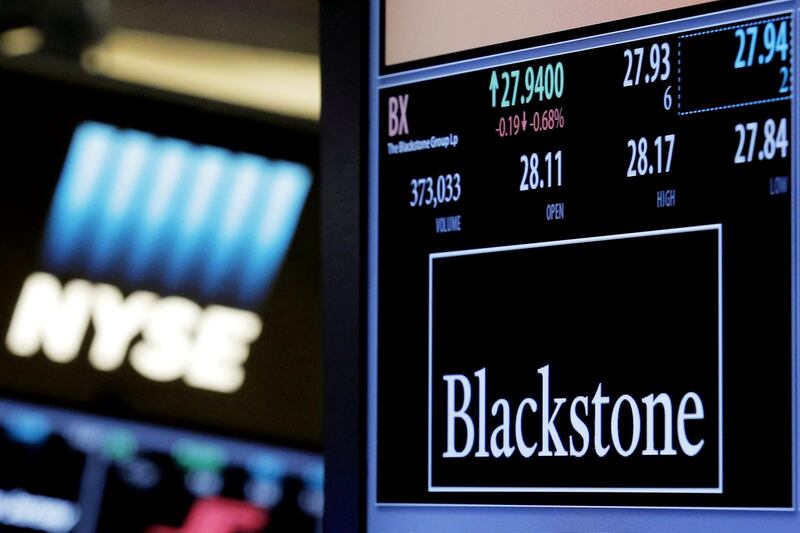Blackstone Group just keeps raking in money from investors.
Total assets under management in the first quarter jumped 22 per cent from a year earlier to a record $449.6 billion through a combination of fundraising and financial gains, Blackstone said in a statement Thursday. Inflows were $18.2bn in the quarter.
Private equity firms are coming off a record year for fundraising. The industry brought in $453bn globally in 2017, according to Preqin. They’re expected to keep benefiting as investors search for better returns and flee more expensive alternatives such as hedge funds.
“Amid declining global markets and a sharp increase in volatility, Blackstone continued to protect and grow our investors’ capital in the first quarter,” said Stephen Schwarzman, Blackstone’s chief executive officer. “Investors in the institutional, retail and insurer channels are allocating more capital to our firm.”
The credit arm at the world’s largest private equity firm grew significantly last year with the addition of a new insurance platform and an energy investment management firm. At the end of the first quarter, the credit group oversaw $140bn in assets, close to a third of the total managed by the New York-based firm.
__________
Read more:
[ Dubai's Abraaj Group said to cut back on 15 per cent of its workforce ]
[ Mubadala and Greece's Taneo set up €400m co-investment platform ]
__________
First quarter economic net income was 65 cents a share, exceeding analysts’ estimates. Distributable earnings were 41 cents a share. The company will make a special distribution of 30 cents per unit to be paid out over the next three quarters in addition to a quarterly dividend of 35 cents paid on May 7.
But it’s yet to be seen whether Blackstone and its peers can continue to produce the gains that have attracted investors or if they’ll be able to put much larger amounts of money to work.
“The focus for the next couple years will shift toward prudent deployment of capital into a U.S. market with arguably fewer value-driven opportunities,” said Gerald O’Hara, an analyst at Jefferies Group. “Funds that are more global in nature, like Blackstone and Apollo, will have an advantage.”
Blackstone has said it plans to double assets under management over the next five years. Part of its expansion depends on a push into the market for retail investors. The firm is targeting people with $1 million to $5m. But offering private equity to individuals hasn’t been easy because the investments are hard to liquidate quickly and come with higher fees than traditional mutual funds.
“If you look out two to three years, these firms are going to continue to innovate and Blackstone will be at the forefront of that,” said Devin Ryan, an analyst at JMP Securities. Investors “want to give them more money not less, so as long as they can come up with products that have good risk-adjusted returns, there’s no reason to doubt their ability to grow.”
Blackstone has made several leadership changes in the past year. The firm recently promoted real estate head Jon Gray to president and chief operating officer, making him an heir apparent. Ken Caplan and Kathleen McCarthy replaced him. In January, John McCormick was named to take over the hedge fund business as Tom Hill stepped into a chairman role. And in June, the former head of the firm’s energy debt practice, Dwight Scott, became president of the credit unit, GSO Capital Partners.
Earlier this year, a group led by Blackstone agreed to buy a majority stake in Thomson Reuters Corp.’s financial and risk unit in a deal that values the business at $20bn, sealing plans for the firm’s biggest buyout in a decade.





